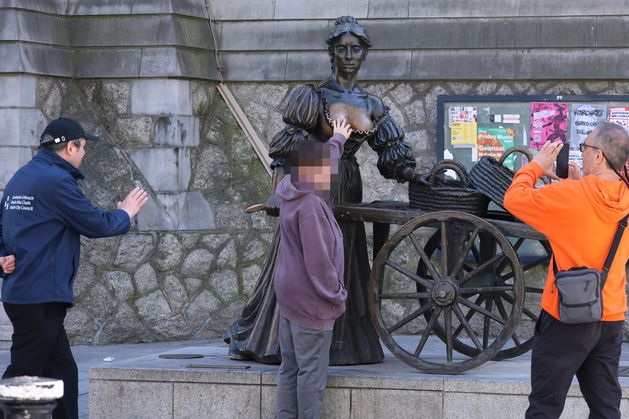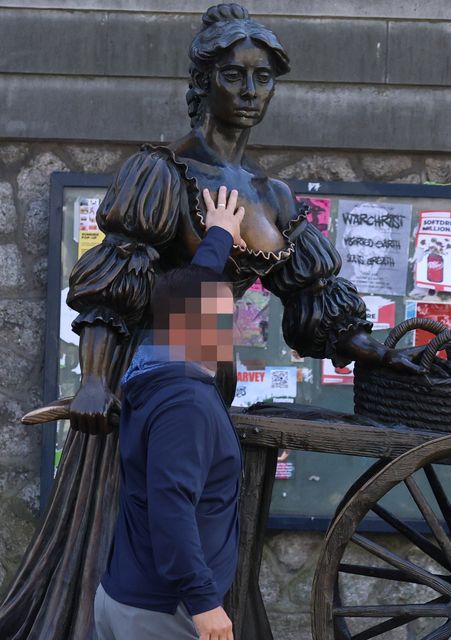The one-week pilot scheme, launched by the local authority yesterday, saw DCC station stewards beside the Suffolk Street statue to police tourists.
Major public backlash was sparked earlier this year over the tradition of tourists rubbing the bust’s breasts for “good luck”, which has been widely condemned as “misogynistic”.
Today’s News in 90 seconds – 6th May 2025
It led to a ‘Leave Molly mAlone’ campaign by singer-songwriter Tilly Cripwell, which called for greater respect towards the bronze statue.
The monument of fishmonger Molly Malone, created by Jeanne Rynhart, was first inaugurated in 1988 for the city’s millennium and was initially built on Grafton Street, but was moved to Suffolk Street in 2014.
DCC said yesterday that the statue is “well fixed in place” and safe after an inspection showed that the sculpture was unstable with broken fittings.
Dublin City council puts stewards at Molly Malone Statue. Photo: Stephen Collins/Collins Photos
The inspection took place after the council decided Molly Malone needed a revamp because of ongoing damage to her bosom caused by groping tourists.
A report by expert metalworkers explained how two of the pins that held Molly in place had been completely destroyed.
However, DCC Arts Officer Ray Yeates told RTÉ’s Morning Ireland that extensive tests by city engineers have shown that the statue “isn’t going anywhere”.
He described it as “completely safe”, stating that there are in fact five pins underneath and that DCC is considering putting liquid concrete into the plinth in the future for extra stability.
Plans are also in place to repaint the bronze statue due to discolouration on its breasts from continued groping.
Mr Yeates conceded that the council may have to accept that tourists will continue to grope the statue.
It is believed the tradition was started around 2012 by a tour guide.
Tourists continued to grope the statue, located outside St Andrew’s Church, despite the presence of DCC stewards as part of the week-long trial.
A number of further options to avoid the practice are being explored, Mr Yeates said. These include putting a structure around the statue, or raising it.
Another option is to move the statue indoors, he said, however, he added that the pilot week will be used to discuss with tourists and those interacting with the statue what the best options are.
The pilot scheme follows a similar one used for the Dublin Portal on North Earl Street, after stewards patrolled the attraction following inappropriate behaviour that sparked international headlines.
#Stewards #busy #stopping #tourists #groping #Molly #Malone #statue #pilot #scheme









